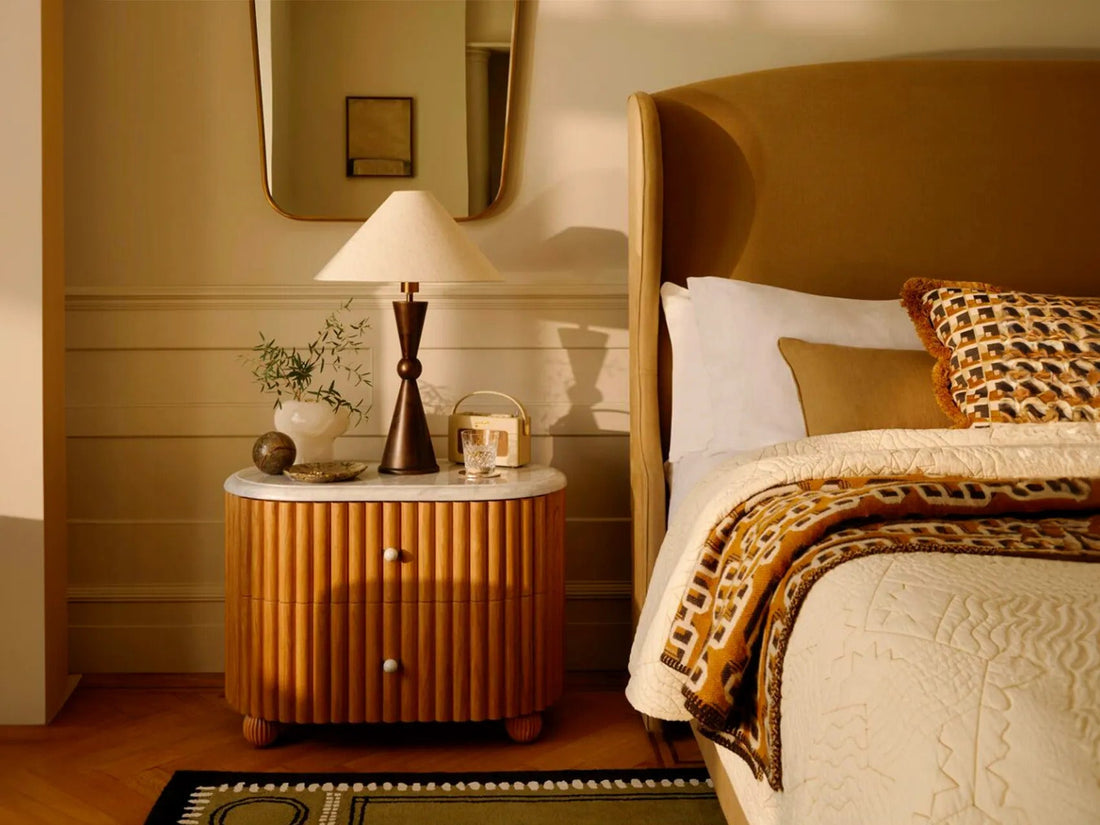Nightstands are tirelessly a necessity for bedrooms since they both serve their purpose and complement the room design. It also needs to incorporate evidence of time, skill, design, and postmodern technologies in meeting consumer needs for these tables. While emphasizing as respects to quality, sustainability, and market characteristics of bedside tables NZ this article goes into detail about the manufacturing process of bedside tables and their stages.
Materials Commonly Applied on Bedside Table Manufacturing
Bedside tables can be made from a wide range of materials and this plays a big role in determining the longevity and aesthetics of the furniture in question. Examples are solid wood, engineered wood, metals, and glasses Among them some materials are more common in use than others. Every material type has its advantages – time-honored oak or walnut or more las modern metal and glass fusion.
From a cost perspective, this has seen manufacturers for instance use reclaimed wood along with special types of adhesives. These sustainable practices have become essential so as to meet the needs of the customers who are now more conscious of the environment. In parts of the world such as New Zealand, consumers requiring bedside tables NZ tend to go for furniture made from materials that are either local or those sparing the environment.
The Design Process
The design stage can be discussed as the critical starting point in bedside table creation. Optimization of garment style includes creating designs that can fit into most interior design themes including minimalistic and traditional. Such updates depict customer needs and trends in functional and aesthetical aspects necessary to create effective products.
Computer-aided designing tools like CAD are used to make functional models of design. It also enables the manufacturer to see dimensions, materials, and even final blends before commencing production. It minimizes the chances whereby luxury bedside tables do not meet set aesthetic & functional needs.
Manufacturing Process and Innovation
● Cutting and Shaping Materials
The fabrication process involves the process of developing the raw material into a particular form and size. Sophisticated equipment and the proper tools guarantee quality work and avoid reinvention of the wheel. For example, the use of CNC routers is mainly due to the possibility of creating complex patterns and, at the same time, ensuring the same level of elaboration.
● Assembly and Joinery
Joinery is the process of fitting the various elements together in the course of assembling the items in question. Elegant joinery such as dovetail and mortise-and-tenon joinery are used more frequently in solid wood bedside tables because of these reasons. Conversely, other steel structures are joined by welding or putting together using bolts for a contemporary appearance.
Several manufacturers in New Zealand use some local craftsmanship elements in their bedside tables NZ designs. These techniques not only beautify the designs but also try to portray an ethnic look in the designs.
● Adaptations & Patterns in the Industry
An important characteristic that is gaining popularity is versatility, in connection with which, manufacturers pay increasing attention to the development of bedside tables. Being aware of their need for special designs of products that meet their requirements concerning dimensions, materials, and finishes, customers strive for exclusivity. Availing of specific preferences is always possible because manufacturers have to meet the demands of multiple customers.
Another trend practiced in numerous contemporary designs is the usage of multifunctional attributes. Attached shelves, chargers, or lamps on bedside tables are becoming increasingly popular because of their functionality. This kind of design is especially popular in regions like New Zealand for people who are interested in bedside tables NZ.
● Quality Assurance and Quality Control
This is an imperative factor if bedding tables will have to meet stringent quality standards edged towards revolutionizing the market. All undergo checks and balances at the material choosing, while at the assembly line, and when it is being given the final touch among others.
Safety and endurance tests and loading & scratches resisting tests are conducted in order to ensure the durability of the product. These procedures assure customers get high-quality bedside tables that are durable.
Conclusion
Production of bedside tables is a complex process, which is equal measure art and science, as well as a concern for the environment. Every aspect of its production process – from the selection of raw materials to the processes of quality assurance – takes its cues from the formulation of clear deliverables against customers’ expectations. As trends change, manufacturers do not stand idly, thus making bedside tables modern and useful while also protecting the environment.

